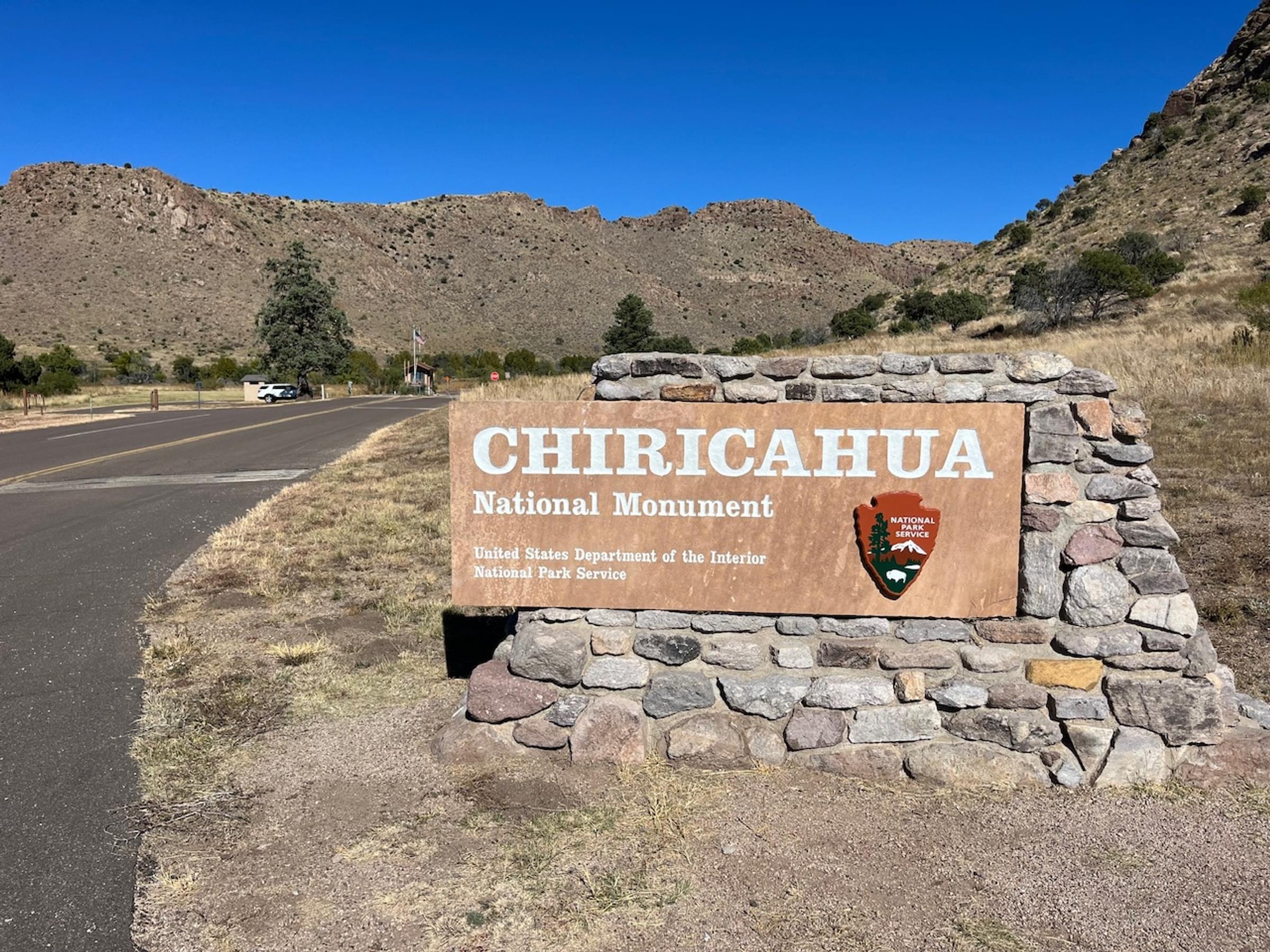Chiricahua National Monument

Chiricahua National Monument
Willcox, Arizona 85643
Chiricahua National Monument Official WebsiteChiricahua National Monument map
Tips for Birding
When submitting eBird observations for Chiricahua National Monument, it is most helpful to start a new checklist for each hotspot within the Monument.
There are six location-specific hotspots within the Monument. Use the general hotspot when you have a checklist that includes multiple locations, the Visitor Center, a trip up Bonita Canyon Drive, or if no other hotspot or personal location is appropriate for your observations.
Spring and fall, ranger-led bird hikes have been held Saturday mornings in the Faraway Ranch Historic District. Check the Monument website for a current schedule.
Birds of Interest
Among USFWS-designated Birds of Conservation Concern for the Sierra Madre Occidental, Sonora Desert, and Chihuahua Desert regions, the following species have been listed multiple times for the Monument: Mexican Whip-poor-will (Jun-Jul), Broad-tailed Hummingbird (Mar-Sep), Gila Woodpecker (Nov-Apr), Olive-sided Flycatcher (May and Sep), Plumbeous Vireo (Apr-Sep), Woodhouse’s Scrub-Jay (all year), Mexican Chickadee (all year), Verdin (all year), Cactus Wren (Feb-Oct), Curve-billed Thrasher (Feb-Oct), Phainopepla (Sep-Mar), Scott’s Oriole (Apr-Sep), Grace’s Warbler (Apr-Jun), Black-throated Gray Warbler (Apr-Oct), Red-faced Warbler (Apr-May), and Pyrrhuloxia (Oct-Apr).
As well as Woodhouse’s, Mexican and Steller’s Jay are frequently observed.
Rufous Hummingbird, a species of Continental Conservation Concern, appear in lists Aug-Sep.
Birders may want to brush up on the calls of Chihuahuan vs Common Raven; although Chihuahuan are observed less often, both species are present.
While Dark-eyed Junco are observed Oct-May, Yellow-eyed Junco are present year round.
Blue-gray Gnatcatcher are more commonly observed than Black-tailed.
The Park Service’s somewhat dated checklist for the Monument may be obtained here: https://www.nps.gov/chir/learn/nature/upload/CHIRBirdList_2016-ACC.pdf
About this Location
The Monument is located at the north end of the Chiricahua Mountains, considered a “sky island” mountain range, being surrounded by a “sea” of much lower desert grassland. Elevations within the Monument range from 5,124 fas at the entrance station to 7,310 fas at the summit of Sugarloaf Mountain.
Originally created in 1924 to preserve the interesting volcanic rock formations found here, Chiricahua National Monument now covers 12,025 acres, an area of enormous biodiversity facilitated not only by the range in elevation but also by its position between the Sonoran and Chihuahuan deserts. 85% of the Monument – all but a corridor around Bonita Canyon Drive -- has been designated wilderness.
A visitor center is located two miles from the entrance to Monument, up Bonita Canyon Drive. The visitor center contains exhibits relating to local geology, natural history, and cultural history. A trail guide brochure is available outside the visitor center at times it is closed. Beyond the visitor center, the main road, Bonita Canyon Drive, meanders six miles east through the park, ending at Massai Point. Cell service is extremely spotty in the Monument. WiFi is available only at the Visitor Center.
About Chiricahua National Monument
See all hotspots at Chiricahua National Monument
A “Wonderland of Rocks” is waiting for you to explore at Chiricahua National Monument. The 8-mile paved scenic drive and 17 miles of day-use hiking trails provide opportunities to discover the beauty, natural sounds, and inhabitants of this 11,985-acre site. Visit the Faraway Ranch Historic District to discover more about the people who have called this area home.
Notable Trails
Some 17 miles of day-use trails allow hikers to enjoy a variety of ecosystems.
Monument trails are described here: https://www.nps.gov/chir/planyourvisit/hiking.htm
Wheelchair accessible trails include the Bonita Creek Loop and Massai Point Nature Trail.
Except for summer, a free shuttle leaves the Faraway Ranch parking lot most mornings at 9:00am, taking hikers to the Massai Point trailhead, but check at the Visitor Center or the Monument website for current schedules.
Features
Restrooms on site
Wheelchair accessible trail
Roadside viewing
Entrance fee
Content from Chiricahua National Monument Official Website, John Montgomery, and Southeast Arizona Birding Observatory
Last updated November 21, 2023
